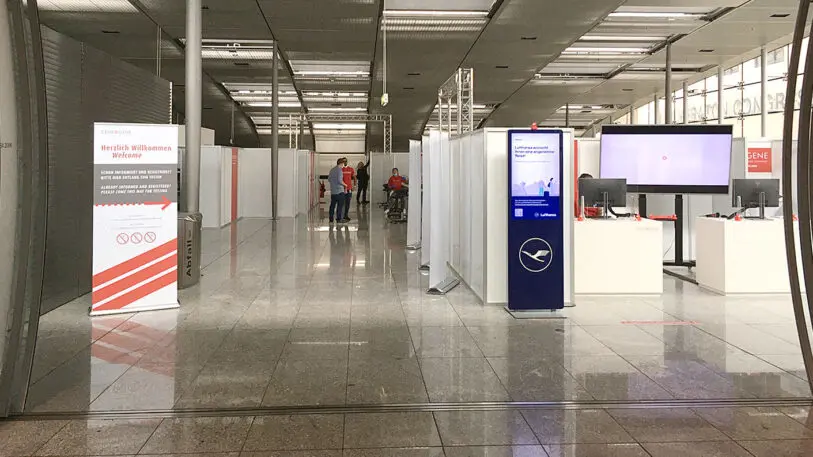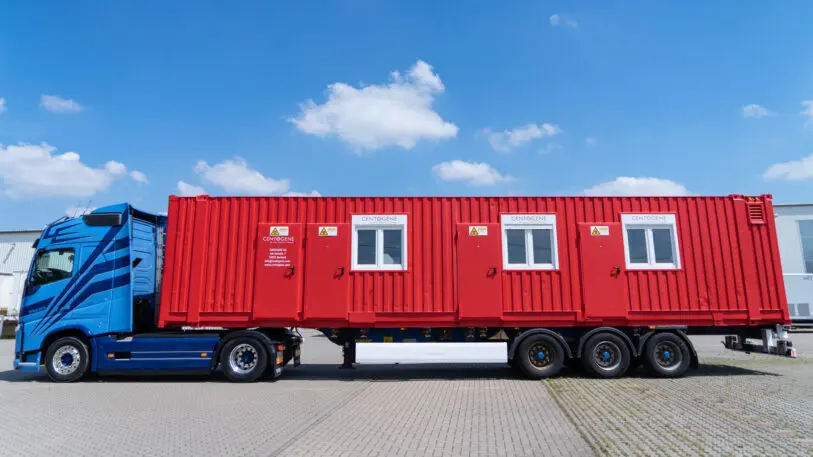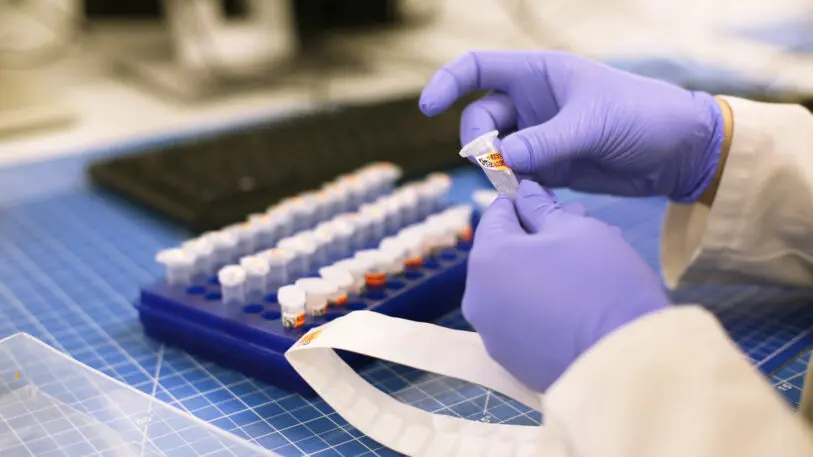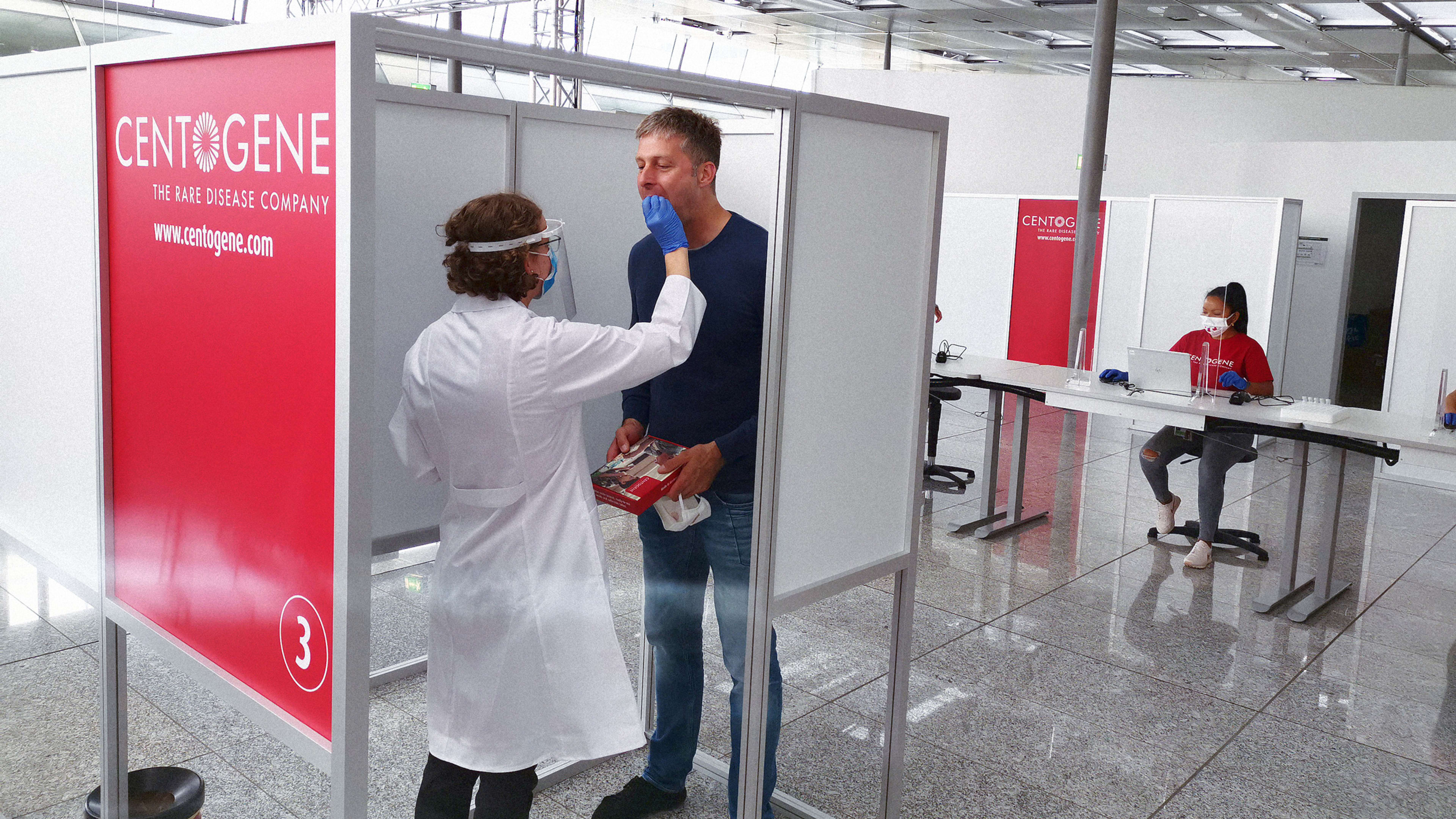Of the many causes and culprits behind the global spread of COVID-19, the international airport is probably the easiest to blame. As an open portal to almost anywhere in the world, the airport is both the way in and the way out for highly contagious diseases. Now, airports are beginning to try to cut down this risk by offering COVID-19 testing facilities directly on-site.
Earlier this week in Germany, Frankfurt Airport opened a coronavirus testing facility, operated by Centogene, a German biotech company. Located before security on a lower level of the main terminal of one of the world’s busiest airports, the facility is equipped with eight testing spaces capable of performing throat swab Reverse Transcription Polymerase Chain Reaction tests. Customers are taken into small booths the size of changing rooms and swabbed by medical professionals. The facility has the capacity to collect up to 300 test samples per hour.


Volkmar Weckesser, CIO of Centogene, says discussions with the airport began about six weeks ago, and once plans were solidified it took only three days to complete the testing space. The container lab was simply trucked onto the site. “What we see is it’s not so difficult to build such a facility,” Weckesser says. If the need for testing eventually falls, the facility can be disassembled and removed, he says, or stored on-site in anticipation of future outbreaks.

Officials at Frankfurt Airport note that the test facility, opened through a partnership between the airport, Centogene, and the airline Lufthansa, is not becoming a formalized part of the security screening process. “We’re giving people the option. It’s not mandatory,” says Dieter Hulick, a Frankfurt Airport spokesman. He calls it simply a new service the airport is making available to its customers. “It’s an additional piece of the puzzle to regain the trust that it’s safe to fly.”

At New York’s John F. Kennedy International airport, two new test facilities have been opened by XpresSpa, the massage and manicure business that can be found in airports across the country. Rebranding itself as XpresCheck, the company has partnered with a medical company and adapted one of its retail spaces to serve as a testing area for airline and airport employees. A second space made available by the airport is also able to conduct tests, providing both nasal swab Polymerase Chain Reaction tests and blood antibody tests. The company is hoping to expand to other airports, replacing its shuttered massage chairs with nasal swabbing stations.
These adaptations to the physical spaces of airports may soon become more common, as air travel rebounds and the companies dependent on it seek to assuage the fears of customers.
Weckesser says test facilities like these will become more common in the months ahead, and that Centogene has started talks with other airports about building more test facilities. “A lot of airports are thinking about how to make flying safe in the future,” he says. “We think Frankfurt is a blueprint.”
Recognize your brand’s excellence by applying to this year’s Brands That Matter Awards before the early-rate deadline, May 3.
